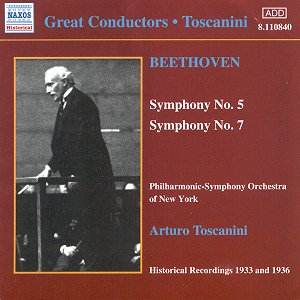 Composer: Ludwig van Beethoven
Composer: Ludwig van Beethoven
Works: Symphonies No. 1 in C major, Op. 21; No. 2 in D major, Op. 36; No. 3 in E flat major, Op. 55 ‘Eroica’; No. 4 in B flat major, Op. 60; No. 5 in C minor, Op. 67; No. 6 in F major, Op. 68 ‘Pastoral’; No. 7 in A major, Op. 92; No. 8 in F major, Op. 93; No. 9 in D minor, Op. 125 ‘Choral’
Performers: Yvonne Kenny (soprano), Sarah Walker (mezzo-soprano), Patrick Power (tenor), Petteri Salomaa (bass), The Schutz Choir of London, The London Classical Players conducted by Sir Roger Norrington
Recording: Recorded in No 1 Studio, Abbey Road, London, 1986-1988
Label: Virgin Classics
Roger Norrington’s cycle of Beethoven’s symphonies, initially released between 1987 and 1989, stands as a landmark in the interpretation of these canonical works. Norrington, a pioneer of the period-instrument movement, provides a refreshing and provocative perspective on Beethoven that challenges traditional listening habits, particularly through his meticulous attention to the composer’s metronome markings. This collection reveals a Beethoven whose symphonic voice speaks with vigor and clarity, yet invites scrutiny over interpretive choices that at times verge on the controversial.
The first disc, featuring Symphony No. 1 and the ‘Eroica’, sets an invigorating tone. Norrington’s approach to the First Symphony is characterized by its lithe string playing and articulate winds, though the timpani’s aggressive presence occasionally disrupts the delicate balance. The ‘Eroica’ showcases Norrington’s commitment to brisk tempos, notably in the first movement, which pulsates with energy but lacks some breadth compared to interpretations by Harnoncourt or Gardiner. The funeral march, similarly swift, fails to convey the gravitas that such a monumental moment requires, despite some striking details, such as the sepulchral timpani strokes. The finale, while exhilarating, does not fully capitalize on the dramatic potential of the Poco andante, resulting in an account that, while engaging, feels slightly unmoored.
In the second disc, Norrington couples the Second and Eighth Symphonies, where his interpretive choices shine. The Second Symphony benefits from buoyant tempos, particularly in the finale, which is executed with a sense of joyous abandon. The Eighth, often overshadowed, receives a vibrant performance, with Norrington’s deft handling of the first movement’s energy and the lightheartedness of the second movement reflecting Beethoven’s wit. The overtures ‘Coriolan’ and ‘Egmont’ provide a bracing contrast, although ‘Egmont’ tends to the unyielding, losing some of its inherent drama.
The third disc, featuring the Fourth and Seventh Symphonies, reveals Norrington’s nuanced understanding of Beethoven’s contrasts. The slow introduction to the Fourth is particularly well realized, leading to a first movement that bursts forth with joy. However, the Adagio is a point of contention; it is taken at a pace that challenges traditional expectations, perhaps at the expense of the movement’s meditative quality. The Seventh Symphony, described as the “apotheosis of the dance,” finds a fine spring in its step, albeit with a scherzo that may come off as disconcertingly brisk. Norrington’s restraint in the finale, while surprising, permits a clarity that is often lost in more frantic interpretations.
The coupling of the Fifth and Sixth Symphonies in disc four presents a vivid illustration of Norrington’s interpretive acumen. The Fifth is rendered with dramatic intensity, with Norrington driving the rhythms forward with urgency while maintaining a keen attention to detail. The Sixth, however, is a mixed bag; while the pastoral elements are beautifully portrayed, the first movement’s briskness risks losing the leisurely charm of a countryside stroll. The second movement, conversely, flows with ideal grace, allowing the winds to shine.
The final disc, dedicated to the Ninth Symphony, poses the most significant interpretive challenges. While the first movement unfolds with judicious pacing, the treatment of the scherzo’s trio and the Adagio molto e cantabile movement raises concerns over tension and gravitas. Norrington’s adherence to metronomic precision, particularly in the finale, results in a reading that, while technically cogent, lacks the ecstatic lift that other conductors, like Harnoncourt, achieve with broader tempos. The choir and soloists perform admirably, but the overall effect feels diminished by choices that prioritize strict adherence to the score over the organic ebb and flow of the music.
Norrington’s Beethoven cycle is a compelling exploration, marked by both triumph and contention. Each performance is filled with insights that provoke thoughtful listening, and while some interpretations may not fully satisfy in terms of weight and drama, the cycle as a whole represents a significant achievement in the performance of these symphonic masterpieces. It invites listeners—especially those accustomed to modern interpretations—to engage with Beethoven’s works in a new light. This collection, though it may not be the first choice for all, stands as a provocative and thoughtful contribution to the ongoing discourse surrounding Beethoven’s symphonic legacy.



